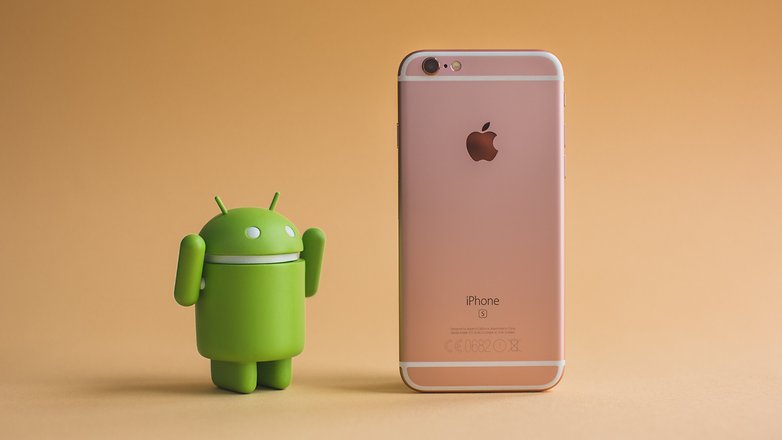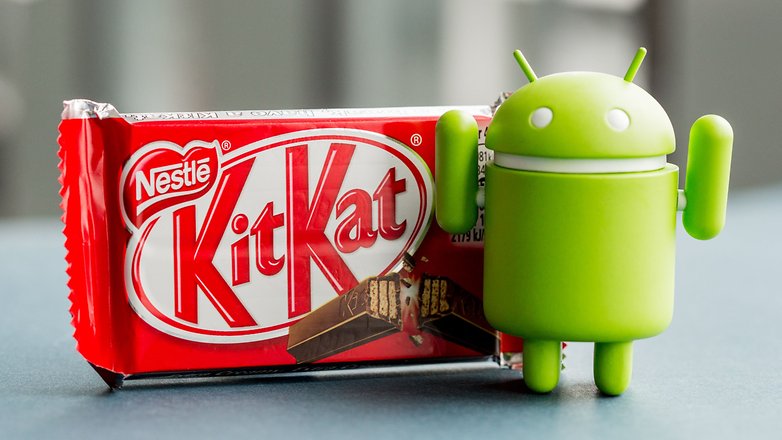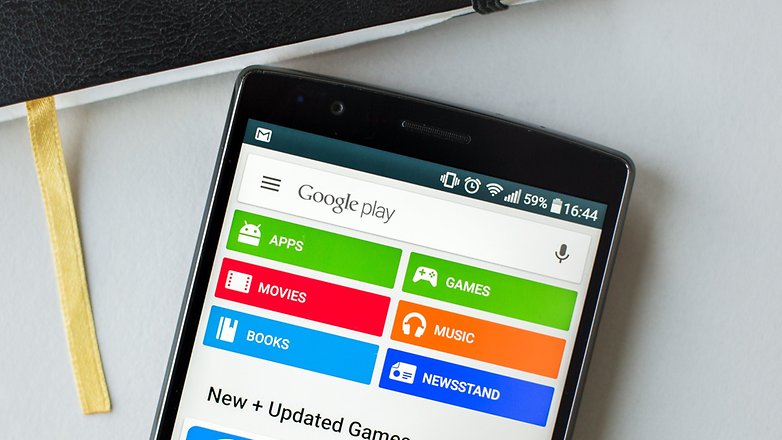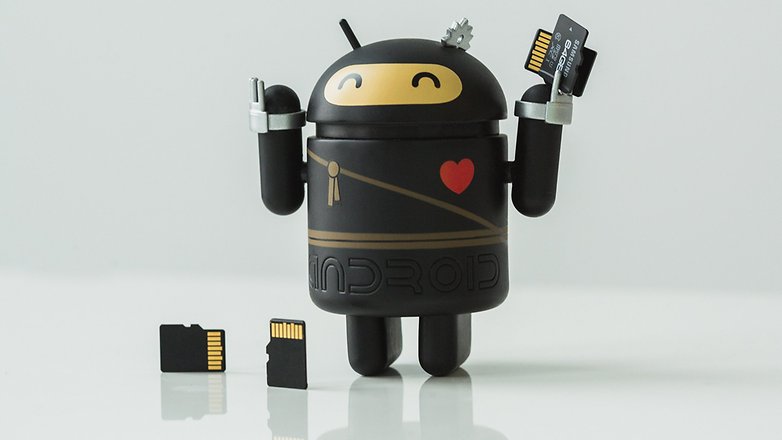What is Android?
Android is Google's software for smartphones, tablets, and many other devices like TVs and cars. Launched in 2003, Android today, the most popular operating system (OS) in the world.
Android's job as OS is to be the translator between you and your device. For example, when you make a call, Android is responsible for telling your phone how to do it. It works more or less like Windows on your computer.

This is just a small portion of devices running Android / ANDROIDPIT OS
Google-powered Android, which makes major platform updates every year and releases minor updates to fix minor flaws and stabilize the system.
Where does Android come from?
Android has been owned by Google since 2005 (No, Google didn't invent Android). The Linux Core Operating System – If you have friends who work in IT, you may have heard. This is the base structure of the GNU / Linux operating system, which is a unix type system (portable, multitasking and multi-user operating system). Linux core is one of the most prominent examples of free software as it can support the development and execution of other free software.
What is the difference between Android and iPhone?
Not quite a difference between Android and iPhone, but rather the difference between Android and iOS, which is the operating system used by Apple on their devices.

Android-iOS War Shouldn't End Soon / ANDROIDPIT
Basically, both systems are capable of the same thing, with minor differences. Both open applications, connect to Wi-Fi networks, take photos, send messages and so on, but have different looks and different possibilities. In the link below, you will learn more about these differences:
Why is Android the same on all devices?
Manufacturers can modify Android to adapt the operating system to their interface. Ie Samsung, Sony, Lenovo, etc. make relevant changes and transform Android to your design and need.
What are the advantages of Android?
Options, many options. With Android you have hundreds of handsets at your disposal, from the cheapest to the most expensive and innovative on the market.
Android is also incredibly customizable, both in its functions and in its appearance.
Why do all versions have a sweet name?
All Android versions are codenamed based on consecutive letters of the alphabet. The latest version presented by Google was Android N, which has not yet received a candy name, but previous versions include Marshmallow, Lollipop, KitKat and Jelly Bean.
Legend has it that the Android developer received this code name from his colleagues at Apple, where he worked before joining the Google family. Because of your love for desserts, all versions of your system have candy names.

Android version 4.4 also known as KitKat / ANDROIDPIT
In addition, Google wants Android to be a system that makes the lives of users "sweeter", does not bring major problems and is easy to handle, thus giving names of sweets to their versions.
You can read more about Android versions here.
What is the Google Play Store?
The Google Play Store is Google's app store for Android. Here you can download and buy different apps, games, books, movies, music and more.
To purchase any of the Play store services I need a Gmail account.

The Play Store is the most trusted store to get apps / ANDROIDPIT
Here are some words you should know about Android
ADB: acronym for Android Debug Bridge, a tool that is mainly used by developers to send commands from a computer to Android. It works as a client-server, ie able to simulate on the PC situations that would happen on the portable device.
Android Wear: It is a version of the operating system, Android, adapted for wearable products such as smartwatches and fit bands.
APK: Android application file format, used to distribute and install applications. Each Android application is compiled and archived in a single file, which includes all application code, features, etc. The application file can have any name, but must use the .apk extension. For convenience, an application file is often referred to as an ".apk".
Backup: The English term refers to backing up your data (emails, contacts, SMS). recommended that you always do it before rooting. The most popular app to back up on Android is Titanium Backup.
Bluetooth: data transmission system between devices by radio waves and without using wires or other connectors.
Bootloader: procedure to access the recovery and download modes of the device.
Brick: means "brick" in English. It refers to leaving the device as a brick that does not start and becomes unusable due to some configuration error after making a modification.
Open Source: Android is such an operating system, which means users have the ability to modify and improve it freely. That's why on Android, unlike iOS, anyone can create an app for other users to enjoy.
Factory Reset: restore factory settings. to format your device and leave it as it was originally.

You may see this screen more often than you think / ANDROIDPIT
Firmware: the ROM content of the device. For the firmware version of your device go to Settings -> About Phone -> Software Info.
Flash: the act of changing the ROM of a device.
Kernel: can be understood as the core of our operating system. It is responsible for uniting the software and hardware functions of the handset.
KIES: Samsung app that lets you update and sync data from your smartphone or tablet.
Launcher: Responsible for customizing the device by modifying the user interface. In this article, you will be given a selection with the best options for your Android.
Download Mode: device download mode, used to install or replace your device firmware or a new ROM.
ODIN: program to flash your device.
MicroSD: Removable memory card format, smaller than MiniSD, for use in portable devices.

These are the microSD / ANDROIDPIT cards
OTA: stands for Over The Air and refers to updates that are made from the smartphone or tablet without the need to connect it to the computer.
QR: black and white bar code that can be scanned with your device to open a link, take you to an app, etc.
Recovery Mode: Another way to start your Android device is to install ROMs, wipe your Android device, and format your device.
ROM: What you see on the device can be said to be equivalent to the operating system of the computer. Android devices usually have an original ROM, depending on the brand of your device. Check out our selection of the best custom ROMs for your Android.
Root: Unlocking the Android operating system will give you full control over the device through which you can access hidden files, change ROM or install certain special apps. Root on Android makes you a "superuser".
ONLY: as we specified above, OS stands for operating system

The Android operating system may seem complicated, but let us unravel the mysteries of this world and you will see that Android is not a seven-headed bug / ANDROIDPIT
Soft Reset: the act of restarting your phone, intentionally or not. It has the same effect as when you remove your battery.
Unlock: to "unlock" the device so that you can use a SIM card from any carrier.
Widget: "Icon" or part of an app that we can put on the home screen to quickly view information or access the app more quickly and easily.
Wipe: means "clean up" in English. the act of formatting the device, so to speak. Deletes external ROM data, such as Gmail accounts, apps, or settings. This results in the removal of our data.
Little by little, we are improving our knowledge of these, and many more, terms. Stay tuned for upcoming Android Starter episodes to learn all about the world of green little robot.
. (tagsToTranslate) Android Operating System (t) Android (t) Android OS (t) Android Marshmallow (t) Android N (t) Android Lollipop
